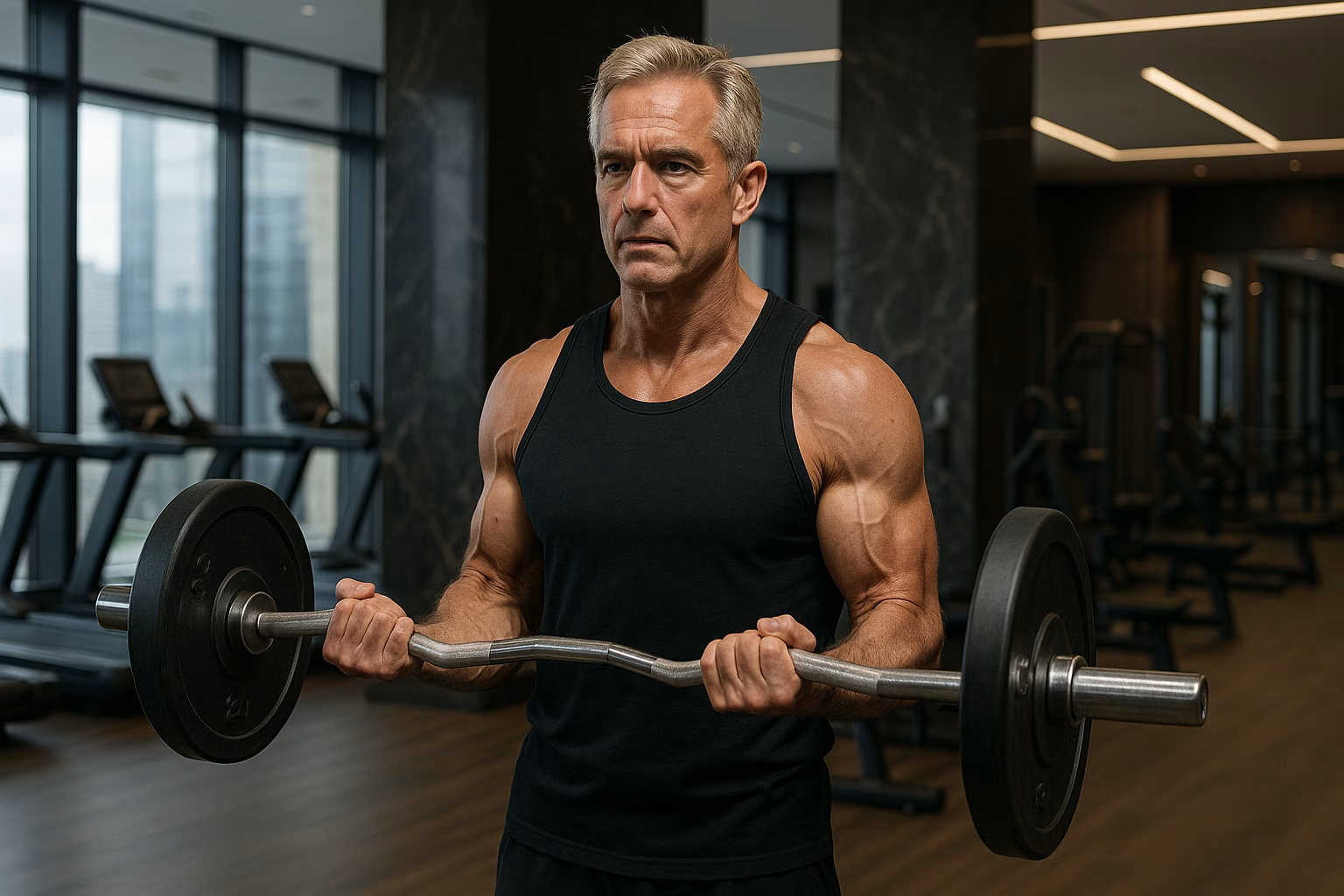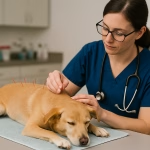
TRT vs Natural Testosterone Boosters: Which Is Right for You? and its connection to men’s health over 40 and longevity.
Introduction: Understanding Your Options for Boosting Testosterone
Testosterone is more than just a “male hormone.” It plays a vital role in regulating energy levels, building muscle, supporting cognitive function, fueling sex drive, and even maintaining overall mood and confidence. Yet, starting around the age of 30, testosterone levels naturally begin to decline — typically by about 1% per year. For some men, this decline is hardly noticeable. For others, it brings fatigue, weight gain, low libido, depression, and a frustrating sense that they’re no longer performing at their best.
Faced with these changes, men often find themselves asking:
👉 Should I consider testosterone replacement therapy (TRT), or are natural testosterone boosters a safer, more sustainable solution?
This question isn’t just medical — it’s cultural. Over the past decade, the conversation around testosterone has exploded. Social media influencers, fitness personalities, and men’s health clinics have fueled interest in boosting T-levels through every possible avenue: from prescription-based TRT injections and gels to over-the-counter supplements promising natural hormonal support. Search trends confirm the surge — millions of men worldwide are researching “TRT vs testosterone boosters” every month, trying to find the right path for their health and lifestyle.
But here’s the challenge:
- TRT is clinically proven to restore testosterone levels in men with hypogonadism — yet it comes with medical oversight, potential side effects, and long-term commitments.
- Natural testosterone boosters sound appealing — often marketed as “safer alternatives” — but many lack solid scientific evidence and may even pose risks when misused.
In this article, we’ll dive deep into:
- What TRT is, how it works, and who it’s meant for
- What natural testosterone boosters can (and cannot) do
- The risks, costs, and effectiveness of each approach
- Real-world evidence, expert opinions, and lifestyle-based alternatives
- A practical decision guide to help you choose the best option for your needs
By the end, you’ll walk away with a clear, evidence-based understanding of whether TRT or natural boosters — or perhaps a combination of both with lifestyle changes — is right for you.
What Is Testosterone and Why Does It Matter?
When most people think of testosterone, they imagine muscles, strength, or perhaps even aggression. But testosterone is far more complex than the stereotypical “male hormone.” It’s a vital androgen (sex hormone) produced primarily in the testes in men and, in smaller amounts, in the ovaries and adrenal glands in women.
Key Functions of Testosterone in Men
Testosterone affects nearly every system in the body. Its importance cannot be overstated:
- Muscle Growth & Strength – Testosterone stimulates protein synthesis, helping build lean muscle mass and maintain physical strength.
- Fat Distribution & Metabolism – Adequate levels promote healthy fat distribution; low levels often lead to belly fat accumulation and slower metabolism.
- Bone Density – Essential for strong bones, testosterone deficiency is linked to osteoporosis and fractures in men.
- Sex Drive & Erectile Function – Often called the “libido hormone,” testosterone is crucial for sex drive and plays a role in erectile health.
- Mood & Mental Health – Low testosterone has been associated with depression, irritability, and reduced confidence.
- Energy & Vitality – Many men with declining levels report fatigue, lack of motivation, and brain fog.
When Testosterone Declines
Starting around age 30, men naturally experience a gradual decline of 1% per year in testosterone production. For some, this slow decrease has little impact. For others, the drop is dramatic, manifesting in a condition known as hypogonadism (low T).
Common symptoms of low testosterone include:
- Persistent fatigue
- Loss of muscle mass despite exercise
- Increased body fat, especially around the midsection
- Decreased libido and sexual performance issues
- Mood swings, anxiety, or depression
- Difficulty concentrating or memory problems
If these symptoms sound familiar, you’re not alone. According to the American Urological Association, an estimated 2 in 10 men over 60 and 3 in 10 men over 70 suffer from low testosterone levels significant enough to require attention.
The Importance of Testing, Not Guessing
One of the biggest misconceptions in men’s health today is that you can “feel” your testosterone levels without testing. While symptoms are important, the only way to confirm low testosterone is through a blood test, ideally measuring both total testosterone and free testosterone.
This distinction is important because:
- Total testosterone measures the overall amount in the bloodstream.
- Free testosterone represents the active form that can actually bind to receptors and drive changes in the body.
Doctors typically diagnose low T when levels fall below 300 ng/dL, combined with clear symptoms. Without proper testing, men may mistake stress, poor sleep, or lifestyle factors for low testosterone — leading to unnecessary or unsafe supplementation.
What Is TRT (Testosterone Replacement Therapy)?
When blood tests confirm that testosterone levels are abnormally low, one of the most effective medical treatments available is Testosterone Replacement Therapy (TRT). Unlike supplements that may or may not influence hormones indirectly, TRT directly restores testosterone to clinically healthy levels using prescription-based methods under medical supervision.
How TRT Works
TRT is designed to replace the testosterone that your body no longer produces in sufficient amounts. Once prescribed, testosterone is introduced into the body through various delivery methods, raising hormone levels into the normal physiological range. This process typically requires ongoing treatment, since testosterone decline is not reversible with age.
Forms of TRT (Keyword: “TRT treatment options”)
There are multiple ways doctors can administer testosterone, each with pros and cons:
- Injections (intramuscular or subcutaneous)
- Most common and cost-effective.
- Administered weekly or bi-weekly.
- Provides a direct boost but can cause fluctuations (peaks and troughs).
- Transdermal Gels & Creams
- Applied daily to shoulders, chest, or arms.
- Offers steady absorption but requires caution to avoid skin transfer to others.
- Patches
- Applied nightly, delivering a consistent dose.
- May cause skin irritation for some users.
- Pellet Implants
- Inserted under the skin every 3–6 months.
- Low-maintenance option but requires minor surgical procedure.
- Nasal Gels (e.g., Natesto)
- Applied inside the nostrils multiple times a day.
- Less commonly used but effective for some patients.
Each method has unique benefits, but the choice often depends on lifestyle, cost, convenience, and doctor recommendations.
Benefits of TRT (Keyword: “testosterone therapy benefits”)
Research consistently shows that TRT can:
- Restore energy and reduce fatigue.
- Increase lean muscle mass and strength.
- Improve libido and sexual performance.
- Enhance mood, motivation, and overall quality of life.
- Support bone density and reduce fracture risk.
Many men report noticeable improvements within 3–6 weeks of starting treatment, with sexual and mood-related benefits appearing first, followed by physical changes such as increased muscle and reduced fat over several months.
Risks and Side Effects of TRT (Keyword: “testosterone therapy side effects”)
TRT is not risk-free. While safe when medically supervised, it does come with potential side effects, including:
- Acne and oily skin
- Sleep apnea exacerbation
- Increased red blood cell count (polycythemia), raising risk of blood clots
- Testicular shrinkage and reduced fertility (as the body reduces natural production)
- Breast tenderness or swelling
- Fluid retention
More controversial risks include cardiovascular health and prostate cancer concerns. Current evidence is mixed: some studies suggest TRT may increase risks, while others show neutral or even protective effects when carefully monitored. That’s why regular checkups, blood tests, and medical oversight are non-negotiable for anyone on TRT.
Who Qualifies for TRT? (Keyword: “who should get TRT”)
- Men with clinically diagnosed low testosterone (typically <300 ng/dL).
- Presence of symptoms like fatigue, low libido, and muscle loss.
- Confirmation through multiple blood tests (since levels fluctuate).
Doctors usually recommend lifestyle adjustments first (weight loss, exercise, sleep optimization) before prescribing TRT, unless testosterone levels are severely low or symptoms are debilitating.
What Are Natural Testosterone Boosters?
Not every man with symptoms of low testosterone is a candidate for TRT. In fact, many men turn to natural testosterone boosters first — whether through supplements, diet, or lifestyle changes. These approaches promise a safer, more holistic alternative, but the truth is more nuanced.
What Are Testosterone Boosters? (Keyword: “natural testosterone supplements”)
Testosterone boosters are marketed as over-the-counter products or natural methods that claim to:
- Stimulate the body’s own production of testosterone
- Improve energy, libido, and performance
- Support muscle growth and fat loss
These boosters generally fall into two categories:
- Supplement-Based Boosters – Capsules, powders, or tinctures made with herbs, vitamins, or minerals.
- Lifestyle-Based Boosters – Natural changes in diet, exercise, and daily habits that optimize hormone balance.
Popular Ingredients in Testosterone Supplements (Keyword: “testosterone booster ingredients effectiveness”)
Many booster products contain herbal or nutritional compounds believed to support testosterone production. Here are some of the most common:
- Fenugreek – Shown in some studies to improve libido and strength; mixed results on testosterone itself.
- Ashwagandha – Adaptogenic herb that may reduce stress-related cortisol (which competes with testosterone).
- Tribulus Terrestris – Popular in supplements, but most clinical studies show little effect on testosterone levels.
- D-Aspartic Acid (DAA) – May boost testosterone temporarily, but effects often diminish after a few weeks.
- Zinc & Magnesium – Deficiencies can lower testosterone; supplementation only helps if you’re deficient.
- Vitamin D – Linked to healthy testosterone levels; supplementation is most effective if levels are low.
👉 Key Insight: While some ingredients show promise, evidence is inconsistent. A 2019 NIH study found that while 90% of booster supplements claimed to raise testosterone, only about 25% had any supporting evidence, and some even contained unsafe nutrient levels.
Lifestyle-Based Testosterone Boosting Strategies (Keyword: “how to increase testosterone naturally”)
Unlike supplements, lifestyle-based changes have strong, consistent evidence in supporting hormonal health:
- Strength Training & HIIT – Resistance training is one of the most effective ways to raise testosterone naturally.
- Adequate Sleep – Men who sleep fewer than 5 hours per night may see testosterone drop by up to 15%.
- Healthy Diet – Diets rich in lean protein, healthy fats (omega-3s), and micronutrients (zinc, vitamin D) support hormonal balance.
- Stress Management – Chronic stress elevates cortisol, which suppresses testosterone. Mindfulness, yoga, or even daily walks can help.
- Weight Management – Excess body fat (especially visceral fat) is linked to lower testosterone. Losing even 10% of body weight can improve levels.
- Limiting Alcohol & Smoking – Both are associated with reduced testosterone and impaired sexual health.
Pros and Cons of Natural Testosterone Boosters
Pros:
- Non-invasive and widely accessible
- Lower upfront cost compared to TRT
- Promote overall health improvements (diet, exercise, stress relief)
- Can be effective for men with borderline testosterone levels
Cons:
- Supplements are poorly regulated, with risk of contamination or false claims
- Clinical evidence for most booster pills is weak or inconsistent
- Benefits are often subtle and take months to appear
- May not be effective for men with clinically diagnosed low T
TRT vs Natural Testosterone Boosters: A Head-to-Head Comparison
At this point, you might be asking: “So which option actually works better?” The answer depends on your health status, goals, budget, and willingness to commit. Below is a clear comparison of TRT vs natural testosterone boosters across the key factors men care about most.
Efficacy: How Well Do They Work?
- TRT: Clinically proven to restore testosterone levels to the normal physiological range (300–1,000 ng/dL). Most men notice benefits within weeks.
- Natural Boosters: Mixed results. Some ingredients (e.g., vitamin D, zinc, ashwagandha) may help if you’re deficient, but the average increase is modest. Lifestyle changes, however, have consistent positive effects over time.
Onset of Results
- TRT: Rapid improvements, often noticeable in 3–6 weeks (energy, libido, mood). Muscle and fat changes typically appear after 3–6 months.
- Natural Boosters: Supplements may take months, and results are usually subtle. Lifestyle changes (exercise, diet, sleep) improve testosterone steadily over time but require ongoing commitment.
Safety & Risks
- TRT: Safe under medical supervision but carries risks like infertility, elevated red blood cells, acne, or potential cardiovascular issues. Requires routine blood work.
- Natural Boosters: Supplements are unregulated, may contain contaminants, and some can harm the liver. Lifestyle boosters are generally safe and beneficial.
Cost Comparison (Keyword: “TRT vs testosterone booster cost”)
- TRT: $1,500–$3,000 per year (not always covered by insurance). Additional costs for blood tests and follow-ups.
- Natural Boosters: Supplements range from $30–$100/month. Lifestyle changes (diet, gym, sleep hygiene) cost less but require discipline.
Convenience
- TRT: Requires prescriptions, doctor visits, and ongoing treatment (injections, gels, or pellets). Once started, often a long-term commitment.
- Natural Boosters: Supplements are easy to buy and take daily. Lifestyle changes require effort but improve overall health, not just testosterone.
Comparison Table: TRT vs Natural Testosterone Boosters
| Factor | TRT (Testosterone Replacement Therapy) | Natural Testosterone Boosters |
|---|---|---|
| Efficacy | Clinically proven, strong results | Mixed evidence; modest effects |
| Speed of Results | Fast (3–6 weeks noticeable changes) | Slow (months, lifestyle-dependent) |
| Safety | Safe with medical monitoring, but carries risks | Supplements unregulated; lifestyle safe |
| Cost | $1,500–$3,000/year + medical visits | $30–$100/month supplements; lifestyle low-cost |
| Convenience | Injections, gels, pellets; ongoing monitoring | Easy to take; lifestyle requires discipline |
| Best For | Men with clinically diagnosed low T | Men with borderline T or lifestyle-related decline |
Key Takeaway
- If you have clinically low testosterone, TRT is the only treatment proven to restore hormone levels effectively.
- If your levels are borderline or you prefer a natural approach, lifestyle changes (exercise, sleep, stress, nutrition) can make a significant difference.
- Supplements may help in specific cases but should never replace medical evaluation or lifestyle fundamentals.
Who Should Consider TRT?
TRT isn’t for everyone. In fact, medical experts stress that testosterone replacement therapy should only be prescribed when low testosterone is confirmed through proper testing and accompanied by significant symptoms. Here’s what you need to know.
1. Men with Clinically Diagnosed Low Testosterone (Keyword: “who qualifies for TRT therapy”)
- TRT is typically recommended when blood tests consistently show total testosterone below ~300 ng/dL.
- Doctors often confirm results with multiple morning tests since hormone levels naturally fluctuate during the day.
- Both total testosterone and free testosterone are measured to ensure accuracy.
2. Men with Clear Symptoms of Low T (Keyword: “TRT for men with low testosterone”)
Even with borderline levels, TRT may be considered if symptoms are severe and impacting quality of life:
- Low libido and erectile dysfunction
- Chronic fatigue or lack of motivation
- Loss of muscle mass and strength despite training
- Depression, irritability, or mood instability
- Brain fog and difficulty concentrating
3. Men Over 40 With Age-Related Decline (Keyword: “TRT for men over 40”)
- Testosterone naturally declines by about 1% per year after age 30.
- By age 40–50, some men experience symptoms that mimic hypogonadism, even if levels are only slightly low.
- In such cases, doctors may prescribe TRT after ruling out other causes (stress, obesity, chronic illness, medications).
4. Men Who Have Tried Lifestyle Changes Without Relief
- Doctors typically recommend lifestyle interventions first (exercise, sleep, diet, weight loss).
- If symptoms persist despite lifestyle optimization, TRT becomes a stronger option.
5. Men Willing to Commit to Ongoing Monitoring
TRT isn’t a “set it and forget it” therapy. It requires:
- Routine blood tests every 3–6 months.
- Monitoring for side effects such as high red blood cell counts, changes in cholesterol, or prostate health concerns.
- A willingness to stay under long-term medical supervision.
Who Should Not Consider TRT
- Men looking for a quick performance or bodybuilding “shortcut.”
- Men who want to maintain fertility — TRT can suppress sperm production.
- Those with untreated sleep apnea, prostate cancer, or significant cardiovascular risks (unless cleared by a specialist).
- Anyone considering treatment without a proper diagnosis or physician oversight.
Key Takeaway
TRT is best for men with confirmed low testosterone and significant symptoms that impair daily life. It should be pursued only after medical evaluation, and ideally after trying lifestyle adjustments first. For men over 40 with borderline levels, TRT may help — but only if monitored closely and prescribed responsibly.
Who Should Consider Natural Testosterone Boosters?
Not every man with fatigue, low libido, or mood changes automatically needs prescription testosterone therapy. In many cases, natural testosterone boosters — whether supplements or lifestyle changes — can be a smarter first step.
1. Men with Borderline Testosterone Levels (Keyword: “testosterone booster alternatives”)
- If your testosterone levels are slightly low but not below clinical thresholds (e.g., 300–400 ng/dL), supplements and lifestyle changes may be worth trying first.
- These approaches can help your body maximize its natural hormone production without committing to life-long therapy.
2. Men Experiencing Mild Symptoms (Keyword: “best natural testosterone boosters for men”)
Natural boosters are often recommended if your symptoms are inconvenient but not debilitating, such as:
- Occasional fatigue
- Slight dips in libido
- Modest weight gain
- Stress-related mood changes
These may be addressed effectively with nutritional and lifestyle adjustments before moving to TRT.
3. Younger Men (Under 35–40 Years Old)
- Younger men with hormonal fluctuations may not need TRT unless diagnosed with a medical condition.
- Supplements like vitamin D, zinc, or ashwagandha, combined with exercise and sleep optimization, can often restore balance.
- This avoids the fertility risks of TRT, which can suppress sperm production.
4. Men Interested in a Lifestyle-First Approach (Keyword: “increase testosterone naturally”)
- Natural boosters are ideal for those who want to tackle the root causes of hormonal imbalance: stress, poor diet, lack of exercise, and insufficient sleep.
- Instead of masking the problem, lifestyle changes support overall health and longevity while modestly improving testosterone.
5. Men Who Want a Low-Risk, Accessible Option
- Supplements are widely available without prescriptions.
- Lifestyle strategies (weight training, proper sleep, stress management) are safe, cost-effective, and improve more than just testosterone levels.
- Even if results are subtle, these changes reduce chronic disease risks while supporting hormonal health.
Who Should Not Rely on Natural Boosters Alone
- Men with clinically diagnosed hypogonadism — supplements won’t restore testosterone to normal ranges.
- Those with severe symptoms that impact daily life (e.g., erectile dysfunction, severe depression, extreme fatigue).
- Anyone using unregulated supplements without researching safety or consulting a healthcare professional.
Key Takeaway
Natural testosterone boosters — especially lifestyle-based approaches — are best suited for men with mild symptoms, borderline testosterone levels, or those seeking preventive care. For many men, starting with diet, exercise, sleep, and stress management can make a noticeable difference without the risks or costs of TRT.
Potential Risks of Misuse: The Testosterone ‘Maxxing’ Trend
In recent years, the conversation around testosterone has moved far beyond the doctor’s office. Social media platforms and fitness influencers have glamorized testosterone optimization — often referred to as “testosterone maxxing.” This trend promotes pushing testosterone levels higher and higher through unsupervised TRT, black-market injections, or unregulated supplements.
While the appeal is obvious — more energy, more muscle, more “alpha” — the risks of misuse are significant and often overlooked.
1. The Social Media Effect (Keyword: “testosterone-maxxing trend”)
- Popular influencers, podcast hosts, and online communities encourage men to self-diagnose and self-medicate.
- Figures like Joe Rogan have normalized TRT discussions, fueling widespread curiosity among men in their 20s, 30s, and 40s.
- The problem? Many men jump into TRT without testing, medical oversight, or understanding long-term consequences.
2. Risks of Misusing TRT (Keyword: “testosterone misuse risks”)
When used outside of clinical guidelines, TRT can:
- Suppress natural testosterone production — once on TRT, the body reduces its own production, leading to dependency.
- Cause infertility — TRT decreases sperm production and testicular size, posing major risks for men who still want children.
- Elevate red blood cell counts (polycythemia), increasing the risk of blood clots, strokes, or heart attacks.
- Mask underlying health issues like obesity, poor sleep, or depression that need to be addressed first.
- Create psychological dependence, where men feel they cannot function without treatment.
3. Risks of Misusing Natural Testosterone Boosters
While often marketed as “safe” and “all natural,” boosters are not without danger:
- Unregulated supplements – Many are sold online without FDA oversight, leading to contamination, false labeling, or harmful additives.
- Liver toxicity – Case studies have documented liver damage linked to herbal testosterone boosters.
- Overdosing nutrients – Some supplements contain excessive amounts of zinc, vitamin B6, or DAA, which can disrupt hormonal balance or cause side effects.
- False promises – Many supplements don’t significantly raise testosterone but lure consumers into long-term use with no results.
4. The Psychological Trap of Testosterone Culture
- Men may chase unrealistic ideals of masculinity promoted by influencers.
- Constant comparisons can lead to body dysmorphia, low self-esteem, or overreliance on hormones/supplements.
- Instead of fixing lifestyle foundations, many men turn to “quick fixes” — creating a cycle of disappointment and health risks.
Key Takeaway
The rise of the testosterone-maxxing trend shows how easy it is to misuse both TRT and natural boosters. Without proper medical supervision and critical thinking, men risk trading short-term gains for long-term damage. The safest path is always guided by evidence, testing, and physician oversight.
Lifestyle Alternatives: Safe Ways to Naturally Support Testosterone
Before committing to long-term TRT or spending money on supplements, it’s worth remembering that your body already has the ability to support healthy testosterone levels — if you give it the right conditions. Research shows that simple lifestyle changes can naturally improve testosterone while also boosting overall health, energy, and longevity.
1. Exercise: The Testosterone-Friendly Workout (Keyword: “exercise to boost testosterone”)
- Strength Training: Resistance training (like squats, deadlifts, bench press) is proven to elevate testosterone, especially when using large muscle groups.
- High-Intensity Interval Training (HIIT): Short bursts of high-effort cardio followed by recovery periods increase testosterone more effectively than long-duration endurance training.
- Avoid Overtraining: Too much cardio or lifting without recovery can actually lower testosterone due to elevated cortisol.
👉 Actionable Tip: Aim for 3–4 strength sessions per week with compound lifts, plus 1–2 HIIT sessions for balance.
2. Sleep: The Underrated Hormone Booster (Keyword: “sleep and testosterone”)
- Studies show men who sleep less than 5 hours a night may experience a 15% drop in testosterone levels compared to well-rested men.
- Testosterone is primarily released during deep REM sleep, making rest critical for hormonal balance.
👉 Actionable Tip: Prioritize 7–9 hours of quality sleep. Keep a consistent bedtime, reduce screen exposure before bed, and keep your bedroom cool and dark.
3. Nutrition: Fueling Hormonal Balance (Keyword: “diet for testosterone”)
- Healthy Fats: Avocados, olive oil, nuts, and fatty fish support hormone production.
- Protein: Essential for muscle maintenance, which influences testosterone signaling.
- Micronutrients:
- Zinc (oysters, beef, pumpkin seeds) – deficiency is linked to low T.
- Vitamin D (sunlight, salmon, fortified foods) – plays a crucial role in testosterone regulation.
- Magnesium (leafy greens, nuts) – supports free testosterone.
👉 Actionable Tip: Eat a balanced diet with at least 20–30% of calories from healthy fats, along with lean protein and micronutrient-rich foods.
4. Stress Management: Lower Cortisol, Protect Testosterone (Keyword: “stress and testosterone”)
- Chronic stress elevates cortisol, a hormone that directly suppresses testosterone.
- Stress-driven habits like overeating, poor sleep, and alcohol use further damage hormone balance.
👉 Actionable Tip: Incorporate stress-reducing practices — mindfulness meditation, yoga, deep breathing, or even 15-minute daily walks.
5. Weight Management: Fat Loss and Testosterone (Keyword: “weight loss and testosterone levels”)
- Excess body fat, especially around the belly, converts testosterone into estrogen via aromatase activity.
- Obesity is strongly linked to lower testosterone and sexual dysfunction.
👉 Actionable Tip: Even a 10% reduction in body weight can significantly raise testosterone levels in overweight men.
6. Cut Back on Alcohol and Smoking
- Heavy drinking lowers testosterone production and damages liver function, which is essential for hormone metabolism.
- Smoking has been linked to reduced sperm quality and lower testosterone.
👉 Actionable Tip: Limit alcohol to moderate levels (1–2 drinks per day max) and avoid smoking altogether.
Key Takeaway
While lifestyle changes may not replace TRT for men with clinically diagnosed hypogonadism, they are the foundation of hormonal health. For men with borderline levels or mild symptoms, these strategies often lead to noticeable improvements — without prescriptions, side effects, or long-term risks.
How to Decide: TRT or Natural Boosters?
By now, you’ve seen the pros, cons, benefits, and risks of both TRT and natural testosterone boosters. But the big question remains: Which option is right for you?
The truth is, there isn’t a one-size-fits-all answer. The decision depends on your testosterone levels, symptom severity, lifestyle, and long-term health goals. Below is a practical framework to guide you.
Step 1: Test, Don’t Guess (Keyword: “testosterone blood test”)
- Before making any decision, get a blood test that measures both total testosterone and free testosterone.
- Testing should be done in the morning, when levels are highest.
- Confirm with two separate tests before moving forward.
👉 If levels are below ~300 ng/dL and you’re experiencing major symptoms, TRT may be worth considering.
👉 If levels are borderline (300–400 ng/dL) and symptoms are mild, natural boosters and lifestyle changes are usually the first step.
Step 2: Address Lifestyle Foundations First (Keyword: “lifestyle changes to boost testosterone”)
Before committing to long-term therapy:
- Prioritize sleep, strength training, stress management, and nutrition.
- Lose excess body fat and cut back on alcohol/smoking.
- These steps alone can significantly improve hormone balance — and if TRT is eventually needed, they’ll make it more effective.
Step 3: Evaluate Symptoms and Quality of Life
Ask yourself:
- Are your symptoms (fatigue, low libido, muscle loss, depression) mild or severe?
- Do they interfere with daily function, relationships, or career performance?
- Have you given lifestyle interventions enough time (at least 3–6 months)?
👉 Mild symptoms → natural boosters + lifestyle first.
👉 Severe, persistent symptoms → talk to a doctor about TRT.
Step 4: Consult a Qualified Physician (Keyword: “should I take testosterone therapy”)
- Only a doctor can determine whether TRT is appropriate for your case.
- Discuss your test results, medical history, and fertility goals.
- Ensure you understand the commitment to monitoring (blood tests, checkups, adjustments).
Step 5: Beware of Red Flags
- Avoid black-market testosterone or self-prescribing boosters.
- Don’t rely on social media influencers for medical advice.
- Be cautious of supplements promising “instant results” — many are untested or unsafe.
Decision Roadmap Summary
| Situation | Best Path Forward |
|---|---|
| Clinically low T (<300 ng/dL) with severe symptoms | TRT with doctor supervision |
| Borderline T (300–400 ng/dL), mild symptoms | Lifestyle optimization + natural boosters |
| Younger men (<35) with stress-related dips | Lifestyle-first approach; avoid TRT unless diagnosed |
| Men over 40 with persistent symptoms despite lifestyle changes | Discuss TRT with physician |
| Men prioritizing fertility | Avoid TRT, focus on natural methods |
Key Takeaway
Deciding between TRT and natural boosters isn’t about chasing quick results — it’s about choosing the safest, most effective path for your health and goals. The smartest move is always to test first, optimize lifestyle, and make medical decisions with a qualified doctor.
Conclusion: Making the Right Choice for Your Health
Deciding between Testosterone Replacement Therapy (TRT) and natural testosterone boosters is not just about chasing higher numbers — it’s about choosing the safest and most effective way to improve your health, vitality, and long-term well-being.
Here’s what we’ve learned:
- TRT is the gold standard for men with clinically low testosterone (<300 ng/dL) and significant symptoms. It delivers rapid, measurable results, but requires lifelong medical supervision and carries potential risks.
- Natural testosterone boosters — especially lifestyle-driven approaches like strength training, nutrition, quality sleep, and stress management — are effective for men with mild or borderline low levels. Supplements may help in specific cases but should be chosen carefully and backed by science.
- The rise of the testosterone-maxxing trend shows how tempting shortcuts can be — but unsupervised hormone use or reliance on unregulated supplements can do more harm than good.
Ultimately, the smartest path is a measured, evidence-based approach:
- Get tested.
- Fix lifestyle foundations first.
- Use supplements with caution, only when deficiencies exist.
- Consider TRT only when symptoms are severe and confirmed by multiple tests — always under the guidance of a qualified physician.
Your Next Step
If you’re struggling with fatigue, low libido, or lack of motivation, don’t guess — get your testosterone levels tested. Armed with accurate data, you and your doctor can make the right decision for your body and your goals.
👉 Take action today:
- Book a blood test to check your testosterone.
- Commit to at least 3 months of lifestyle improvements.
- If symptoms persist, consult a hormone specialist to explore TRT safely.
Remember: the goal isn’t just higher testosterone — it’s better health, vitality, and quality of life.











Dry Cleaning in New York city by Sparkly Maid NYC
We are looking for partnerships with other businesses for mutual promotion. Please contact us for more information!
Business Name: Sparkly Maid NYC Cleaning Services
Address: 447 Broadway 2nd floor #523, New York, NY 10013, United States
Phone Number: +1 646-585-3515
Website: https://sparklymaidnyc.com